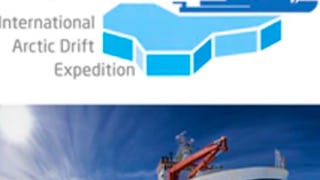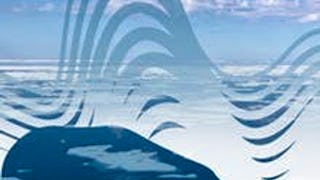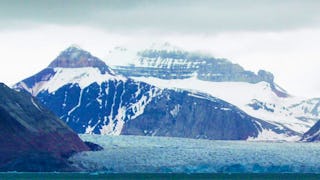In this course, you will learn how the changing Arctic environment is tied to the growing economic and strategic importance of the North. After setting the stage through a review of the peoples of the Arctic and how they are dealing with change, Arctic governance, economies national defense, attention turns to marine use of the Arctic, oil and gas exploration, mining, fisheries and tourism. The course ends with a survey of recent Arctic events.

Enjoy unlimited growth with a year of Coursera Plus for $199 (regularly $399). Save now.

The North Awakens
This course is part of Arctic Meltdown Specialization

Instructor: Mark C. Serreze
Included with
(20 reviews)
What you'll learn
Articulate the drivers of the growing economic and strategic importance of the Arctic in the context of the environmental changes unfolding
Identify the impacts of the changing Arctic, both positive and negative, on the peoples of the North
Skills you'll gain
Details to know

Add to your LinkedIn profile
4 assignments
See how employees at top companies are mastering in-demand skills

Build your subject-matter expertise
- Learn new concepts from industry experts
- Gain a foundational understanding of a subject or tool
- Develop job-relevant skills with hands-on projects
- Earn a shareable career certificate

There are 4 modules in this course
This week, we'll take a closer look at the peoples of the Arctic - the Arctic as a homeland - and then turn attention to the role of the Arctic Council of the eight Arctic nations. After a foray into Arctic demographics, we'll briefly look at some of the big economic drivers in the Arctic (setting a stage for later more focused discussion in subsequent modules) and how the changing Arctic is playing into national defense.
What's included
6 videos1 assignment
Here we will learn how the loss of sea ice is opening up the Arctic Ocean to increased marine use and the many issues that have arisen. To set a framework, we will first become familiar with marine use limits in the Arctic Ocean as set by the United Nations Convention Law of the Sea. Then we will explore use of the Northern Sea Route along the Russian Side of the Arctic Ocean, the Northwest Passage through the channels of the Canadian Arctic Archipelago, and the the issues that may play into how heavily these shortcuts between the Atlantic and the Pacific may be used. Finally, we will look at the International Polar Code, which sets requirements for ships operating in polar waters.
What's included
5 videos1 assignment
Large areas of the Arctic are underlain by significant deposits of oil and natural gas. In this week's lessons, we will look at exploration and production activities by Russia, which are occurring all along its shelf seas and over many land areas, the United States along the North Slope of Alaska, the Beaufort and Chukchi Seas, Norway, where all production is offshore, as well as prospects for Arctic development by Canada and Norway.
What's included
4 videos1 assignment
This week, we'll first look at another big sector of the Arctic's economy - mining - using examples such as Nornickel in Russia, the Red Dog Mine and gold mining in Alaska, diamond mining in Canada, and coal mining in Svalbard. Attention then turns to commercial and sport fishing, and the growing tourist industry. Finally, we'll take a look at some recently emerging events in the Arctic.
What's included
4 videos1 assignment1 discussion prompt
Earn a career certificate
Add this credential to your LinkedIn profile, resume, or CV. Share it on social media and in your performance review.
Instructor

Offered by
Explore more from Economics
 Status: Preview
Status: PreviewUniversity of Colorado Boulder
 Status: Free
Status: FreeUniversity of Alberta
 Status: Free
Status: FreeUniversity of Alberta
 Status: Free Trial
Status: Free TrialUniversity of Colorado Boulder
Why people choose Coursera for their career




Learner reviews
20 reviews
- 5 stars
70%
- 4 stars
25%
- 3 stars
0%
- 2 stars
0%
- 1 star
5%
Showing 3 of 20
Reviewed on Dec 10, 2024
Not as good as the first two. More moralism here. But still useful info. Another broken video.
Reviewed on Feb 7, 2022
Excellent Course !!! very informative .. and the instructors really knowledgeable and helpful ...
Reviewed on Sep 26, 2024
Great professor, interesting material. Glad I took this course!

Open new doors with Coursera Plus
Unlimited access to 10,000+ world-class courses, hands-on projects, and job-ready certificate programs - all included in your subscription
Advance your career with an online degree
Earn a degree from world-class universities - 100% online
Join over 3,400 global companies that choose Coursera for Business
Upskill your employees to excel in the digital economy
Frequently asked questions
To access the course materials, assignments and to earn a Certificate, you will need to purchase the Certificate experience when you enroll in a course. You can try a Free Trial instead, or apply for Financial Aid. The course may offer 'Full Course, No Certificate' instead. This option lets you see all course materials, submit required assessments, and get a final grade. This also means that you will not be able to purchase a Certificate experience.
When you enroll in the course, you get access to all of the courses in the Specialization, and you earn a certificate when you complete the work. Your electronic Certificate will be added to your Accomplishments page - from there, you can print your Certificate or add it to your LinkedIn profile.
Yes. In select learning programs, you can apply for financial aid or a scholarship if you can’t afford the enrollment fee. If fin aid or scholarship is available for your learning program selection, you’ll find a link to apply on the description page.
More questions
Financial aid available,

